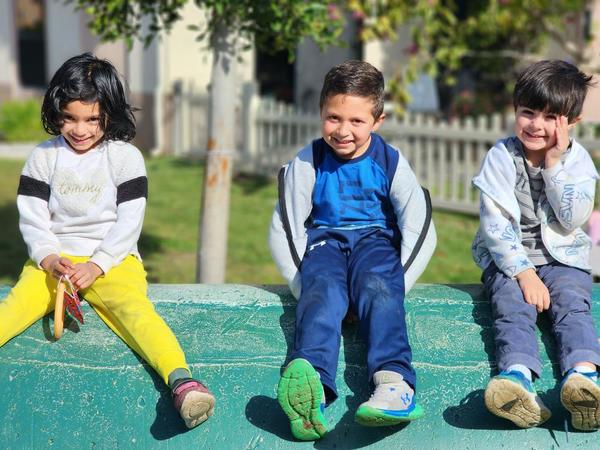(858) 759-0631
The Practical Life area is one of the four general sections in our Prepared Environment (classroom). Activities here are essential to the development of the child. They build on the child's natural interest and help him develop good work habits, concentration, eye-hand coordination, a lengthened attention span, and body control. (Montessori, The Secret of Childhood) They lay the foundation for all other work.
They are real-life tasks that aid the child in gaining independence, allowing him to care for himself and the environment, relate to others, and analyze his movement. They provide the link from the home to our classroom because the actions within the activities are done at home. These actions are familiar to the child, and unlike the adults, these proceedings carry a different purpose for the child.
The child gains confidence as well as competence through working with Practical Life lessons. 'The work on these real tasks, involving the hand and the mind together, develop a great capacity to concentrate, which is the best possible preparation for the intellectual work to come.' (Your Montessori Child, A Parent's Guide To Montessori School)
The primary purposes of the Practical Life activities are as follows:
Exterior
- The expression of movement
- Development and coordination
- Care of the person
- Development of social relations
Interior
- Adaptation
- Orientation
- Independence
- Self-control
- Self-respect and personal
- Dignity
- Development of Intelligence
- Concentration
- Development toward normalization
- To satisfy the child's need for order, motor activity, and repetition
The Practical life activities are simple and are performed individually daily to establish. They are also referred to as exercises, which are repeated frequently in the classroom. They contain and restore proper conditions in the environment for the child himself and for the whole group's life. They are clear and have a definite purpose which helps the child understand the movement's progression and be attracted to them. They have an intelligent purpose that the child needs for his development. The child organizes his intelligence through activity. His intelligence is directed not only to the end of the activity but the means of it. He must follow the logical sequence of actions, and each exercise is presented with immense exactness and precision.
For the child, the exercises in Practical Life are means of developing and constructing the self, providing an internal purpose. They fulfill the child's needs through human tendencies such as; order, orientation, work, and perfection.
The lessons in the Practical Life area are divided into five major groups:
- The Preliminary exercises
- These exercises are introduced to aid in orientation and adaptation to the environment. They are not complete activities but are in preparation for more complex exercises. They are the first activities presented to the child. For example, how to roll and unroll a rug, carry a tray, push in a chair, and so forth.
- Care of the environment
- For both indoors and outdoors. These exercises help the child build respect for the environment. They allow the child to participate in maintaining the environment and providing order. Children learn beauty and order as a collective and cooperative task in which each child is responsible for its care—for example, dusting, washing, polishing, sweeping, etc.
- Care of the person or Care of self
- These exercises build self-respect, knowledge, and confidence in themselves, demonstrating what they can do for themselves. In addition, they help build self-esteem within the child. For example, hand washing, dressing frames, combing their hair, etc.
- Grace and Courtesy
- These exercises help develop social skills. The child learns how to interact with other children in the environment, which is also called the community. They support the child to gain self-dignity and confidence that he can communicate with others and aid him to be able to control his behavior. Children learn how to respect one another. For example, greeting, offering, apologizing, asking to observe other children's work without interrupting, and much more. These activities are presented early and frequently when the child enters the Primary setting. And it continues throughout the time he remains in the environment. The adult in the environment is the role model.
- Movement:
- Walking On The Line in which helps develop balance in the child's equilibrium.
- The Silence game inhibits all movement to come into a state similar to meditation.
In conclusion, the Practical Life lessons in our classroom are an integral part of our environment. They build the foundation within the child for the other activities in class. They are simple, beautiful, child-size, and natural materials familiar to the children and have a purpose. The Practical Life activities answer the biological needs for movement, human tendencies, exploration, and orientation. They help with adaptation and the child's social desire to participate at whatever level he can within the environment. The general purpose of Practical Life forms the basis for all Montessori Education. 'They take into account the natural impulses of special periods of childhood. Though, for a moment, the exercises have no merely practical aims, they are a work of environmental adaptation. Such adaptation to the environment and efficient functioning is the essence of a good education.' (Montessori, What You Should Know About Your Child)
-Bumblebee Teacher

